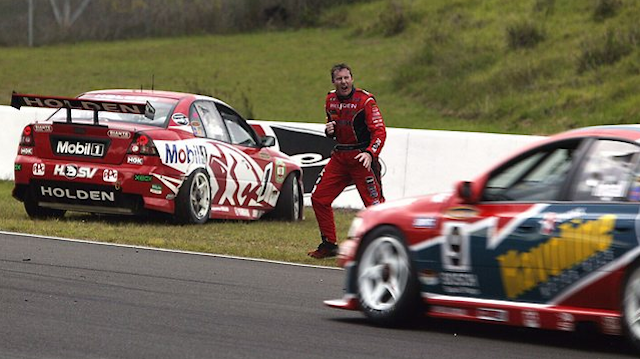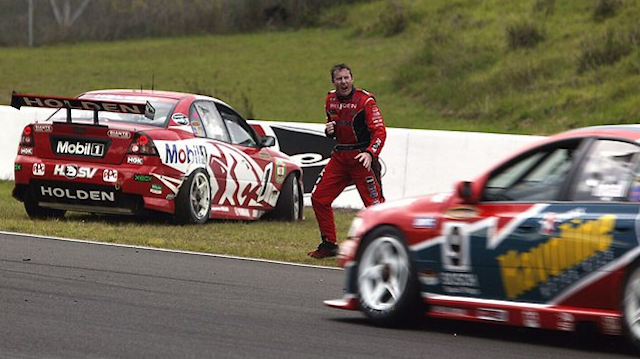

CAMS has reiterated its stance on trackside driver conduct and safety following the tragedy which claimed the life of a young American sprint car driver.
As the death of Kevin Ward jr reverberates around the world, CAMS has underlined its rules and regulations involving drivers who are forced to exit their vehicle on track.
Ward jr was struck by three-time NASCAR champion Tony Stewart during a low-key sprint car race in New York state.
The 20-year-old slammed into the fence after Stewart’s car made contact before he subsequently undid his belts and walked down from the highside of the track to remonstrate as the field cruised around under yellow lights.
“Firstly CAMS is saddened to see such an incident, it’s a tragic loss of life and we feel for family and friends of those involved,” CAMS general manager of motorsport Michael Smith said.
“Safety always comes first with CAMS so it’s imperative that drivers, if stopped on the track and unable to continue or instructed by officials, must move behind the first line of protection immediately it is safe to do so.
“That is certainly something we communicate to participants.”
The incident brings into the spotlight policies and rules regarding what driver’s must do if they are to retreat from their car on the circuit during competition.
While NASCAR is particularly known for its heated confrontations between drivers, CAMS and V8 Supercars officials in Australia have typically taken a hard line on such antics.
The tragic death in New York triggered memories of Australia’s most publicised ‘race rage’ incident which involved Mark Skaife remonstrating with Russell Ingall after contact between the pair had resulted in race-ending damage for Skaife at Eastern Creek in 2003.
Skaife famously stood trackside shaking his fist at Ingall, who retailiated by swerving in the five-time champion’s direction.
At the time officials came down heavily on both drivers. Ingall received a $15,000 fine (reduced to $10,000 on appeal) and 150 point penalty while Skaife received a $10,000 fine and 75 points deduction.
Both also incurred three-race suspended bans for their actions.
The Ward tragedy is meanwhile expected to lead to a review of procedures at speedway tracks across the United States.
Shane Collins, Speedway Australia’s risk and compliance manager and World Series Sprint Cars race director, stresses that there are fundamental differences between the rules in the US and in Australia.
“The thing that happens in America that doesn’t happen here is they can be worked on, essentially have a pit stop at the race meeting. We don’t have that here,” Collins said.
“In America as soon as you spin out and crash it’s natural to get out of the car quickly and either have a look at damage or unfortunately what the fellow did the other day remonstrate or run back to the pits while the cars are still rolling around.
“We don’t have that in Australia. Once you are out you are out.
“The American rules are a little different to ours hence the reason why a lot more people are in and out of the cars or running across tracks.
“The circumstances of what happened in the US accident were that due to the car not going upside down, the race stayed yellow.
“Normally in a situation like that the car would have gone upside down which means its a red light and all cars stop.”





















Discussion about this post